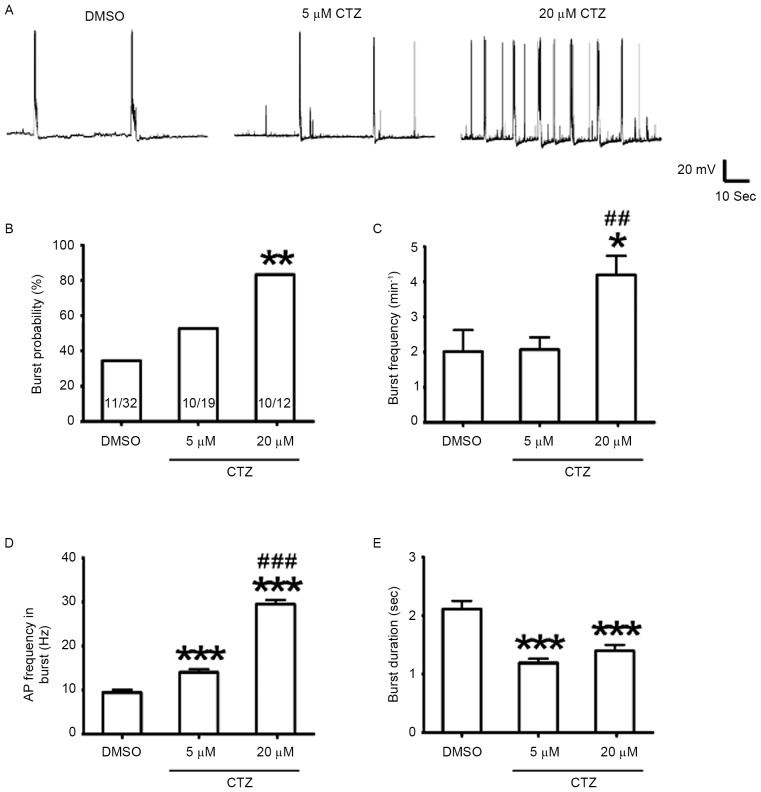Figure 2.
CTZ induced burst activities and increased the bursting strength. (A) Representative current clamp recording traces in the control DMSO, 5 µM CTZ and 20 µM CTZ groups. (B) Percentage of neurons exhibiting burst activities in the three groups. Incubation with 20 µM CTZ significantly increased the percentage, whereas 5 µM CTZ produced no significant difference in burst activities. The numbers written in the bars represent the number of cells (number with burst activities/total number). (C) Frequency of bursting activities occurring. The average number of bursts every minute increased following incubation with 20 µM CTZ. A significant difference was observed between the 20 µM CTZ (n=10) and DMSO control (n=11) groups and also between the 5 µM CTZ (n=10) and 20 µM CTZ groups. (D) AP frequency in burst. The 5 µM CTZ (n=35) and 20 µM CTZ (n=30) groups were significantly increased when compared with the DMSO group (n=47). Additionally, there was a significant difference between the two CTZ groups. (E) Average burst duration in recording. The two CTZ groups had a shorter burst time when compared with the DMSO group [the same recording numbers as in (D)]. Data are presented as the mean ± standard error mean. *P<0.05, **P<0.01 and ***P<0.001 vs. DMSO; ##P<0.01 and ###P<0.001 vs. 5 µM CTZ. CTZ, cyclothiazide; AP, action potential.

